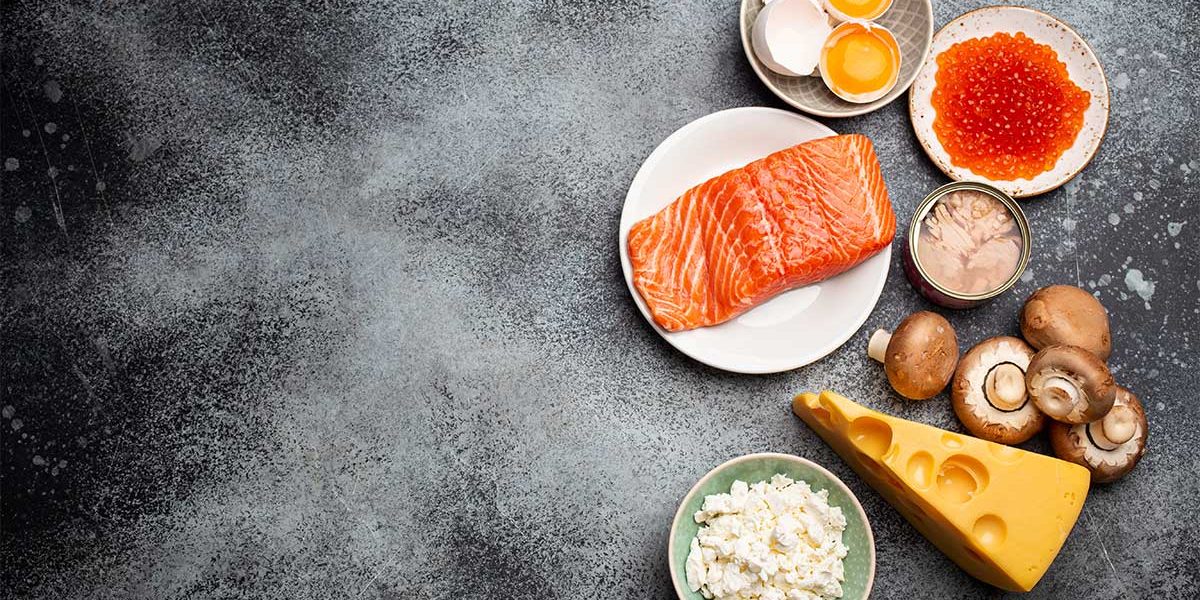In summer in particular, but also in general, the best source of vitamin D is mainly the sun. When we spend a lot of time outdoors and have long days, we just have to be careful not to get sunburnt, so it’s best to get out in the sun and replenish our body’s vitamin D stores in the morning and late afternoon. During this period, even 15-20 minutes in the sun is enough to do this. However, as the weather gets colder and the nights get longer, our vitamin D stores from sun exposure become less and less sufficient, so some experts believe it is important to opt for dietary supplements and/or foods rich in vitamin D in winter.
Why is vitamin D important for our body?
It is essential for the health and proper functioning of bones and muscles, but it also helps to absorb and store calcium, and regulates blood calcium levels.
Vitamin D also plays a role in the body’s immune processes, with research showing that people with adequate levels of vitamin D are much less prone to various diseases, flu and other respiratory illnesses.
What foods are rich in vitamin D?
Fish and fish oil are undoubtedly the best sources. Fish species rich in vitamin D are herring, tuna, catfish, perch, carp, pike, tench, trout, salmon and eel. It’s worth eating as much of these as possible.
Mushrooms are a close second. They are an excellent source of vitamin D. In fact, for vegetarians or vegans, eating mushrooms is paramount. We can cover our daily vitamin D needs by eating about 100 g of mushrooms (i.e. about three champignon mushrooms) that have been left in the sun beforehand. And for other types of mushrooms it is true that we can increase their vitamin D content fivefold if we leave them in the sun for 30-60 minutes before cooking them, because UV light makes them produce vitamin D. It is important to know that cooking does not reduce the amount of vitamin D in food!
Boglar Champ grown oyster mushrooms and champignons are available all year round and naturally contain not only vitamin D, but are an excellent source of vitamins and minerals in general, rich in protein and antioxidants. Because they are low in cholesterol and fat, they can also be used in special diets, for example by diabetics and people suffering from high blood pressure.
The third best source of vitamin D is liver. Some love it, others can’t even look at it, but it’s good to know that it supplies the body with valuable substances such as vitamin A, iron, protein, copper and zinc. Milk and yoghurt follow, for those who are not sensitive to them. Eggs are fifth, and although we should eat pretty much of them to provide our daily vitamin D requirements, they are perfect as a supplement. Incidentally, 100 g of eggs contain 1.75 micrograms of vitamin D, so two eggs should provide about one-eighth of our daily requirement.
Tofu, high cocoa dark chocolate, oilseeds and nuts (pumpkin seeds, walnuts, sunflower seeds, hazelnuts – eaten in moderation and in their natural form, not too salty), margarine (although it has only 8 micrograms of vitamin D in 100 g, it’s worth using instead of butter, especially if you’re on a diet) and various vitamin D-fortified ‘baby foods’ such as cereals, juices and dairy products are in the second half of the top ten.
No wonder: vitamin D deficiency in childhood can have serious consequences and symptoms.
Symptoms and effects of vitamin D deficiency
Signs of childhood deficiency include pale skin, large head, soft skull bones, bowed forehead, curved lower limbs, deformed rib bones and chest bones, increased susceptibility to fractures, loss of muscle tone, delayed tooth development and delayed motor development, frequent respiratory infections.
In adults, vitamin D deficiency is mainly manifested by reduced immunity, most recently, for example, during the Covid pandemic, vitamin D deficient individuals were shown to have a much more severe course of infection.
Can we overdose on vitamin D?
Unfortunately, yes, if we take it in capsule form. It is a fat-soluble vitamin which, if consumed in excess, is stored in the body and can cause long-term kidney problems. To avoid this, it is recommended to consult a dietician or doctor before taking any vitamin supplements! Overdose is only caused by supplements, not by diet or sun exposure, as our body cannot regulate the amount of vitamin D supplied by supplements, but it can regulate the amount of vitamin D it gets from food or sunlight.
Symptoms of vitamin D excess can include vomiting, nausea, abdominal pain, leg cramps, ringing in the ear, dry mouth, increased thirst, diarrhoea, but also drowsiness, confusion, apathy, psychosis, depression, stupor, loss of appetite. Possible effects include gastric ulcer, pancreatitis, hypertension, cardiac arrhythmias, kidney disorders, keratopathy (inflammatory eye disease) and hearing loss.
That’s why, even in winter, it’s better to supplement our vitamin D needs naturally through diet. If we feel that this is not enough and want to prevent deficiencies, it is good to occasionally do an individual vitamin assessment before taking supplements. For people with vitamin D deficiency, there are also mushrooms fortified with vitamin D ‘from the factory’, which are exposed directly to UV rays before sale. But if we choose to leave the mushrooms in the sun at home, this will also improve the vitamin content of the mushrooms we eat.
If you want to know why it’s good to eat lots of mushrooms, especially in summer, or simply want inspiration for what to make for dinner, or to read more about superfoods like mushrooms, follow us on Facebook at https://www.facebook.com/boglarchamp to keep up to date with the latest content.






